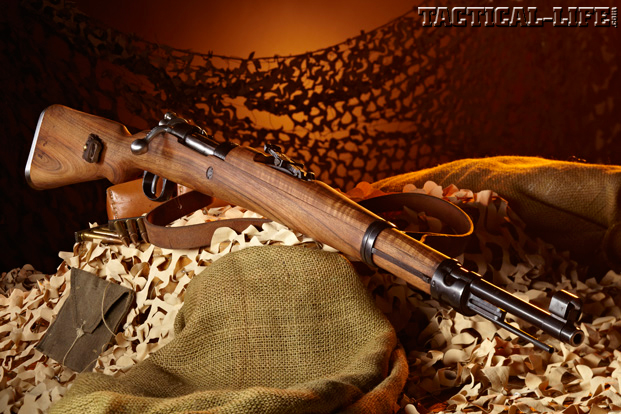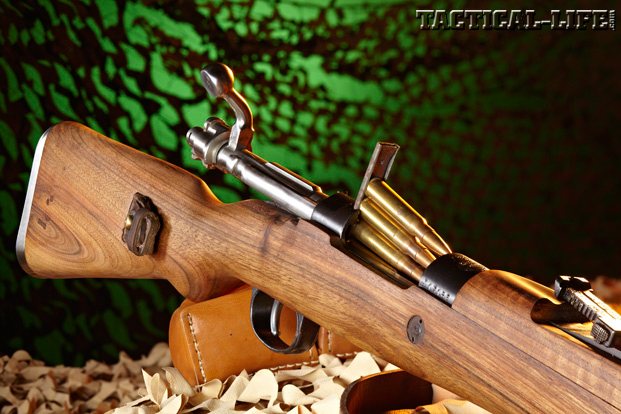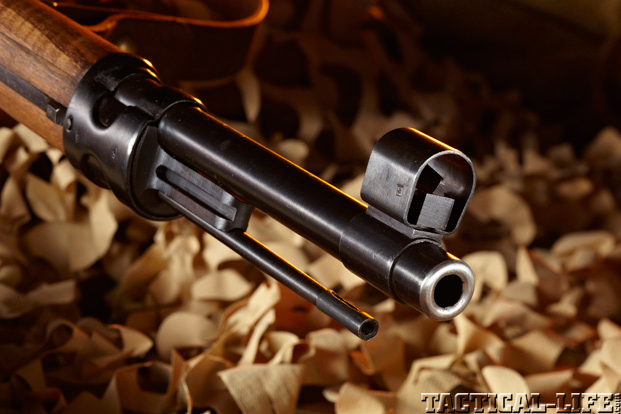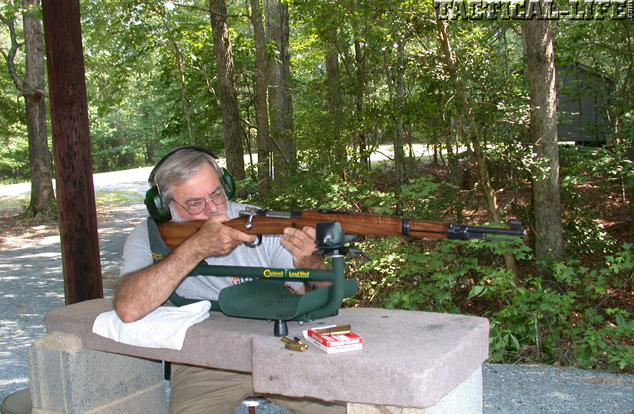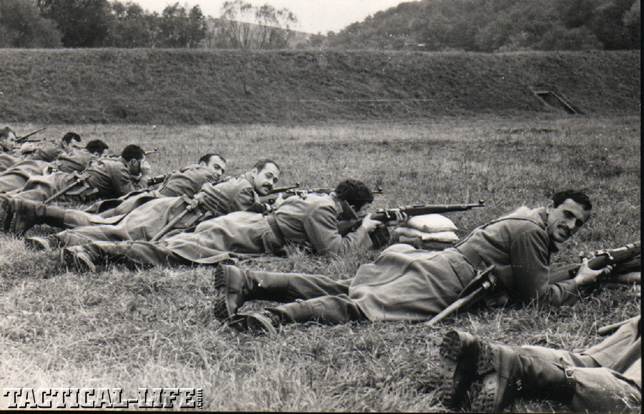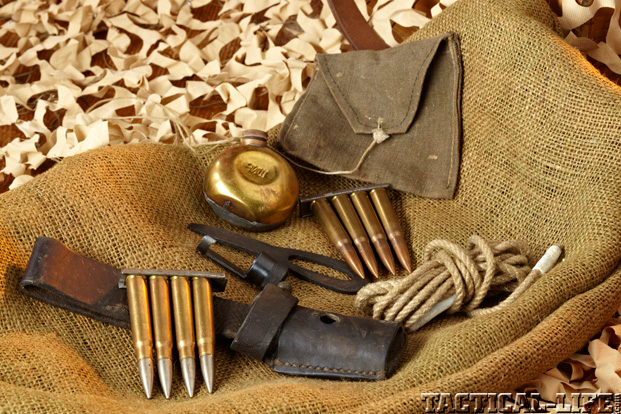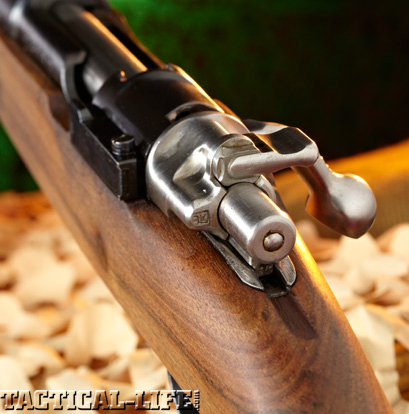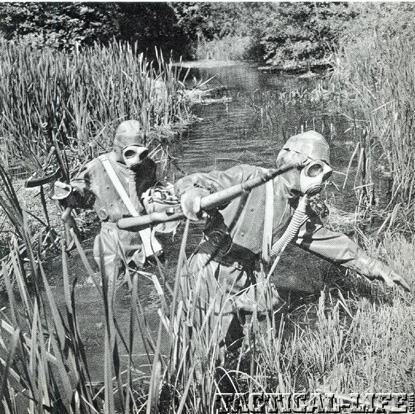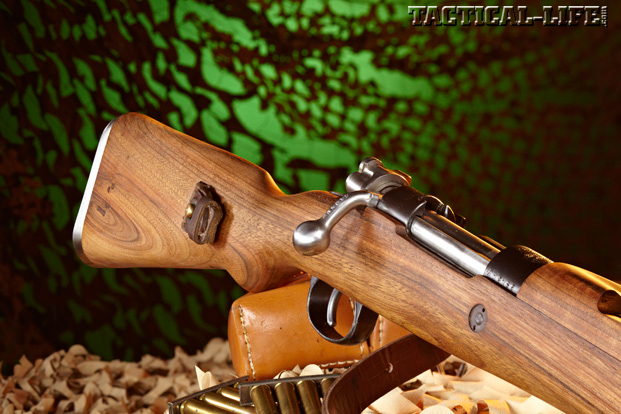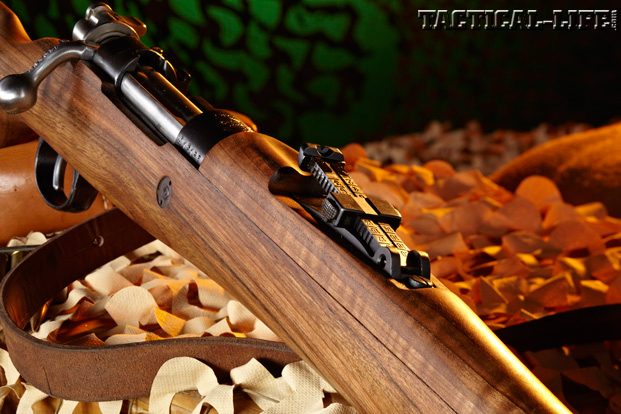The Serbs were a Slavic tribe that settled in the Balkans around A.D. 600, and by the 12th century under their famous king, Stefan Dusan, they had displaced the Byzantines as the dominant power in the region. But the Serbs could not stand against the might of the Ottoman Empire, and at the 1389 Battle of Kosovo the Serbian army was destroyed, resulting in almost 500 years of Turkish domination in the region.
Serbian independence was re-established in 1878, and in keeping with the best traditions of Balkan tribalism and vendetta, Serbia soon found itself at odds with most of its neighbors, especially the Austro-Hungarian Empire. In 1914, Bosnian-Serb nationalists, who were financed and armed by Serbia, assassinated the heir to the Austro-Hungarian throne. These actions led to the First World War. While Serbia ws occupied by the Central Powers, the Serbian army was evacuated by the Allies, reequipped and continued to see service on the Thesalonikii front in northern Greece until 1918, After the defeat of the Central Powers, Serbia formed the core of the new Kingdom of the Serbs, Croats and Slovenes, or Yugoslavia. The new kingdom had a mixed population of Serbs, Albanians, Macedonians, Croats, Slovenes, Bosnians and Montenegrins who coexisted in a tense atmosphere acerbated by centuries of tribal and religious distrust.
Serbian Firepower
Having a history so interlaced with warfare, the Serbs attempted to equip their army with the most up-to-date weaponry. In 1880, they adopted the Puška 78/80, a variation of Mauser’s Infanteriegewehr M.71 rifle. This was followed by a series of rifles based on Mauser’s M95 and M98 actions and chambered for the 7x57mm cartridge: the Puška 1899, the Puška 99/07 and the Puška 1910. Supplemented with French, Russian and captured Austrian weapons, these were the rifles the Serbs fought with in the Great War.
Advertisement — Continue Reading Below
After WWI, Yugoslavia received Austrian, German, Turkish and Bulgarian rifles as reparations. In an attempt at standardization, Yugoslavia decided to adopt the 7.9x57mm cartridge, and the most suitable rifles were re-barreled for this round. Beginning in the early 1920s, the Yugoslav army sought new Mauser rifles, but Allied restrictions prevented their traditional suppliers in Germany from providing them. However, Fabrique Nationale (FN) of Herstal, Belgium, and Ceskoslovenska Zbrojovka (CZ) of Brno, Czechoslovakia, were both producing 98-type Mausers and were only too happy to sign contracts with Belgrade. Between 1924 and 1927, the Yugoslavs contracted 100,000 Fusil Ml3 1924 rifles from FN. It was decided that rifle production would being locally, and the necessary machinery was ordered from FN and then installed at he state arsenal at Kraguyevac by 1927. In the meantime, an order for 40,000 vz. 1924 Mausers was placed with CZ. The rifle produced at Kraguyevac, the Pešadisjka Puška M.1924 (Infantry Rifle Model of 1924), was a copy of the FN Fusil Mle 1924.
The 7.9mm mtak za pušku M.24 was a copy of the German 7.9mm Patrone S and consisted of a rimless, bottlenecked case that was 57mm in length and loaded with a 197-grain, FMJ, boat-tail spitzer bullet with a muzzle velocity of approximately 2,575 feet per second (fps).
World War II
When the Wehrmacht invaded Yugoslavia in 1941, resistance, while fierce, was uncoordinated, and the Germans handily defeated the Yugoslav army and occupied the main population centers. Guerilla bands that had quickly formed in the mountains soon coalesced into two factions: the Chetniks, who supported the deposed royal family, and the Partisans, who were dominated by the Communist party. Both groups apparently spent as much time and energy fighting each other as they did the German and Italian occupiers, who were aided by various ethnic and religious groups seeking revenge for past wrongs (real and imagined).
Advertisement — Continue Reading Below
While the Chetniks and Partisans were equipped with a variety of rifles, their main weapons were the 1924-type Mauser of Belgian, Czech and Yugoslav manufacture, supplemented with captured German Karabiner 98k Mausers. The Partisans gained the support of the Allies and performed a vital service by tying down many divisions of German troops that were sorely needed on other fronts. With the end of the conflict, the Communists, under Marshall Tito, were recognized as the leaders of liberated Yugoslavia.
Post-WWII Arms
The post-war Yugoslav Peoples Army reconditioned the thousands of pre-war Yugoslav and Belgian Mausers and designated them the Puška M.24/47. Kraguyevac also reconditioned ex-German Karabiner 98k and Czech vz. 24 Mausers, which became the 7.9mm Puška M.98(n) (“n” for nemacka, or “German,” in Serbian) and the 7.9mm Puška M.1924/52-Č respectively. Unlike most of the new communist states of Eastern Europe, the Yugoslavs displayed an independent streak and refused to adopt Soviet-pattern small arms. Instead it was decided to restart production of 98-type Mausers at Kraguyevac.
Production of the Puška M.48 began in 1950: it combined features of the Karabiner 98k, the FN Mle 1924 and the Krátka Puška M.1924. In general, the Puška M.48 had a laminated stock, an H-style muzzle band, a side-mounted sling, a hooded front sight and both barrel bands held in place by a single spring bar, all traits similar to the Karabiner 98k. The rear sight and the bayonet were the same as those on the Puška M.1924. The turned-down bolt handle with the knob’s flattened underside resembled that of the pre-war FN Mle 1924. The Puška M48A was introduced in 1952 and designed to reduce costs by replacing some forged steel parts, such as the buttplate and magazine floorplate, with parts made from stamped steel. The Yugoslavs also produced the Puška M.48B, which made even wider use of stamped parts. For some unknown reason, all M.48B rifles are marked “M48A.” The easiest way to tell them apart is to look for the M.48B’s stamped steel triggerguard.
Advertisement — Continue Reading Below
The issue cartridge, the 7.9mm metak sa teskim zrnom M.49 za pušku M.48 (7.9mm cartridge with an M.49 heavy bullet for the M.48 rifle), was ballistically identical to the M.24 loading. Production of the M48A (and perhaps the “B”) reportedly continued until 1965. Besides being used by the Yugoslav army and reserves, numbers were sold to Burma, Syria, Egypt, Algeria, Iraq, Indonesia and Chad. Because these rifles were only marked with serial numbers, they were known as bez oznake puška, or BOP (Serbian for “without crest”).
In 1959 Kraguyevac began production of a copy of the Simonov semi-automatic carbine, followed in 1964 with a variation of the Kalashnikov assault rifle. While the regular Yugoslav army was equipped with these modern weapons, large numbers of Mausers were held in storage for use by the reserves. When Yugoslavia began its inevitable slide into anarchy, thousands of Mausers were used by Serbian paramilitary and police units in addition to the newly formed nationalist forces of the breakaway republics. A few years ago, I saw a television report about the Kosovo Liberation Army turning over some of their weapons to NATO peacekeeping forces. Among the various arms on display were numbers of Puška M.48s. It made me wonder as to just how many of them are still hidden away in cellars, attics, barns and caves, in preparation for the next round of ethnic violence that has been the bane of the Balkans for most of recorded history.
Test Fire
Mitchell’s Mausers was kind enough to lend me a M48A Mauser to test. It had a stamped, metal triggerguard and an M.48B magazine floorplate but bore the Yugoslav crest and the “M48A” stamp on the receiver. Matching serial numbers were evident on the receiver, bolt, barrel, magazine floorplate and stock. Overall, quality of fit and finish were excellent, and the gun was graced with a fairly light, crisp trigger.
Advertisement — Continue Reading Below
For test-firing, Mitchell’s sent along a supply of their 8mm Mauser ammunition loaded with 196-grain, boat-tail spitzer bullets. At my gun club, I placed a series of targets on the 100-yard backstop. Returning to the firing line, I set up my Caldwell Lead Sled shooting rest and proceeded to send rounds downrange. When I looked through my spotting scope, it quickly became apparent that this was a pleasingly accurate rifle. Using a 6-o’clock hold, I was able to produce some very nice groups. I must have done everything right one time (or fate was smiling upon me): I managed to put five rounds into the 9 and 10 rings of one target, producing a group of only 2.62 inches with three holes touching, which is about as good as this child can shoot any iron-sighted military rifle!
Appraisal
While the Yugoslav Pŭska M48A might not be as aesthetically pleasing as the pre-WWII products of Waffenfabrik Mauser that collectors swoon over, it is made well and of excellent materials. The one I test fired proved it could shoot alongside its predecessors anytime. If you are looking for a rugged, no-frills (and affordable) mil-surplus Mauser for shooting, my advice would be to check out one of these M48As. I think you’ll be pleased. Special thanks to my good friend Branko Bogdanovic. Check out Mitchell’s Mausers by calling 800-274-4124 or by visiting mauser.net.
